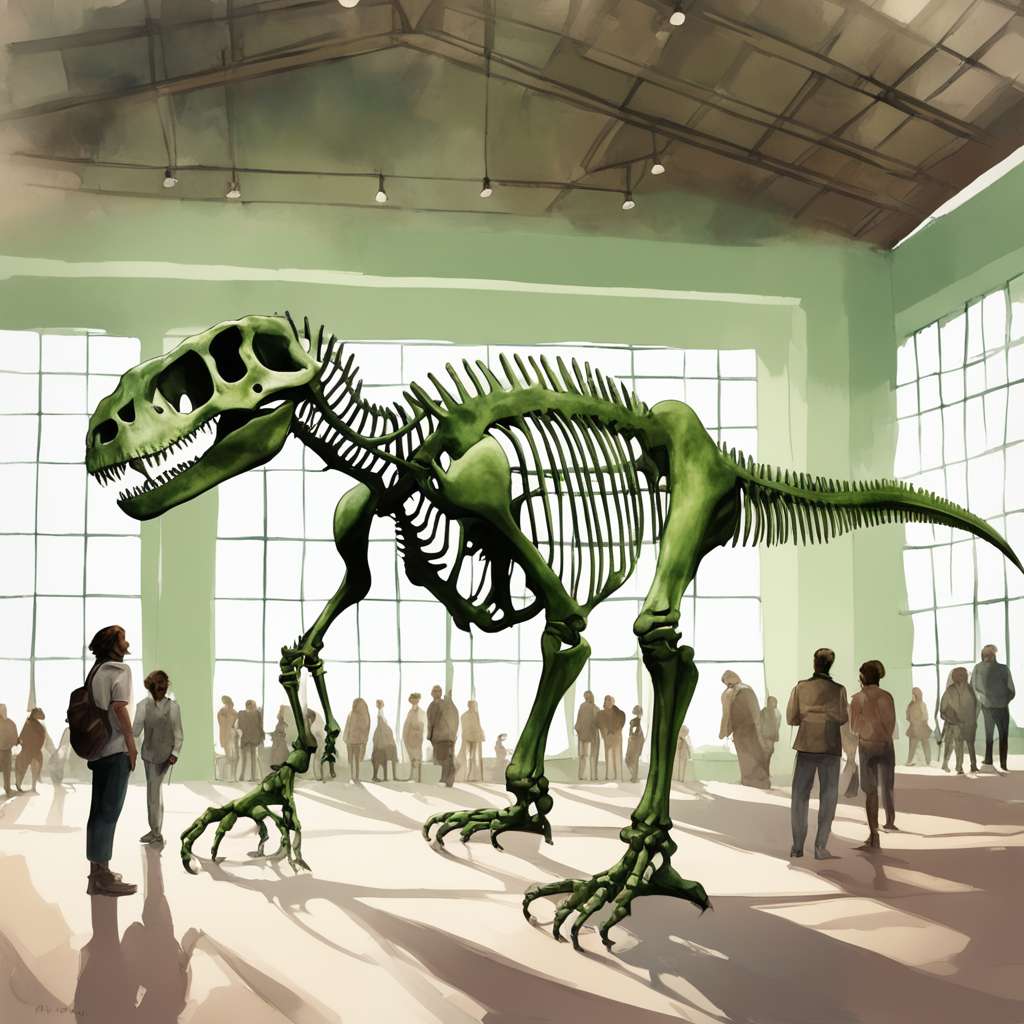
Unveiling magic: gnatalie, the world’s only green dinosaur, debuts in los angeles
- Gnatalie is the only green-colored sauropod specimen in the world, thanks to celadonite deposits.
- The unveiling of Gnatalie coincides with the debut of the NHM Commons, enhancing the museum's community engagement.
- The plush toy inspired by Gnatalie is available for pre-order, priced at $30, with a discount for museum members.
The Natural History Museum of Los Angeles is set to unveil its latest marvel, Gnatalie, a 75-foot sauropod, on November 17th. This extraordinary specimen, discovered in a Utah quarry in 2007, is not only the most complete sauropod skeleton mount on the West Coast but also the only green-colored fossil specimen globally. The unveiling coincides with the debut of the NHM Commons, the museum’s new wing and community hub, marking a significant milestone in the museum’s history.
Gnatalie’s journey from discovery to display has been a long and meticulous process. The excavation, led by Dr. Luis Chiappe and his team from the NHMLAC’s Dinosaur Institute, faced unique challenges, including the persistent presence of stinging gnats at the dig site. This led to the affectionate nickname, Gnatalie, which was officially adopted after a public vote in June 2024. The dinosaur’s distinctive green hue is attributed to celadonite deposits that occurred during a secondary fossilization process, making it a truly unique exhibit.
A Green Marvel: The Science Behind Gnatalie’s Unique Hue
Gnatalie’s green coloration is a result of a rare geological phenomenon. During the late Jurassic Period, approximately 150 million years ago, the fossils were buried in a riverbed. Over time, volcanic activity between 80 to 50 million years ago caused a mineral replacement process, where celadonite infilled the bones, giving them their unusual green color. This makes Gnatalie not only a scientific wonder but also a visual spectacle.
The significance of Gnatalie’s green hue extends beyond its aesthetic appeal. It serves as a powerful educational tool, illustrating the complex processes of fossilization and mineralization. Dr. Luis M. Chiappe emphasizes the importance of such exhibits in engaging the public with scientific discovery, stating, “Dinosaurs are a great vehicle for teaching our visitors about the nature of science, and what better than a green, more than 75-foot-long dinosaur to engage them in the process of scientific discovery and make them reflect on the wonders of the world we live in!”

- Gnatalie is a visual feast for all ages... 🦖...
- Why a plush toy? Feels like marketing... 🤨...
- What if other fossils changed color too?... 🤔...
Gnatalie: From Fossil to Plush
In addition to the awe-inspiring skeleton, Gnatalie has inspired a playful plush toy, available for pre-order through the Natural History Museum’s store. This $30 plush, with a discounted price of $27 for museum members, offers a whimsical take on the prehistoric giant. One side of the plush features a skeleton, while the other side imagines Gnatalie’s appearance millions of years ago.
The plush serves as a tangible connection to the exhibit, allowing visitors to take home a piece of history. It embodies the museum’s mission to make science accessible and engaging for all ages. The plush’s green hue is a nod to the celadonite deposits that give the actual skeleton its distinctive color, further linking the toy to its real-life counterpart.
Our Advice on the City
For those planning a visit to Los Angeles, the unveiling of Gnatalie at the Natural History Museum is a must-see event. The NHM Commons offers a new community hub, providing a space for learning and exploration. Beyond the museum, Los Angeles boasts a vibrant cultural scene, with numerous attractions and activities to explore.
For occasional travelers, a visit to the museum provides a unique opportunity to witness a groundbreaking exhibit and delve into the wonders of paleontology. It’s a chance to see history come alive and gain a deeper appreciation for the natural world.
For seasoned travelers, consider exploring the broader context of Los Angeles’ rich scientific and cultural landscape. The city is home to numerous museums, galleries, and institutions that offer insights into various fields of study. Engaging with these resources can provide a more comprehensive understanding of the city’s contributions to science and culture.
In conclusion, Gnatalie’s debut at the Natural History Museum is not just an event; it’s an invitation to explore the fascinating intersection of science, history, and creativity. Whether you’re a local or a visitor, this exhibit promises to inspire and educate, offering a glimpse into the past while sparking curiosity about the future.
Trending now







